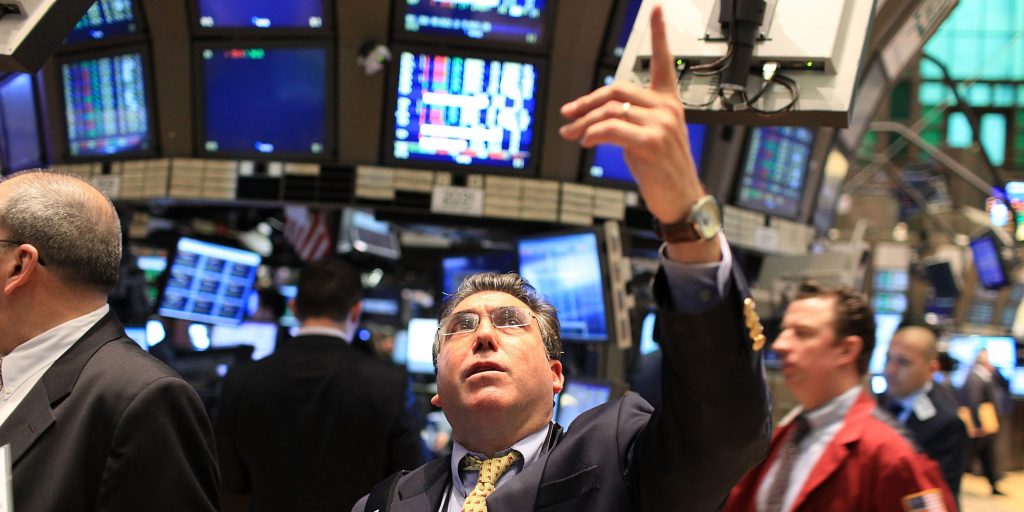- The S&P 500 flashed a technical death cross for the first time in two years on Monday.
- The death cross is a moving average crossover strategy that some traders use as a signal to sell a security.
- But historical data shows that the sell indicator has a less-than-stellar track record, according to Fundstrat.
The S&P 500 flashed a bearish death cross signal for the first time in two years on Monday, but traders shouldn't put too much stock into the signal, according to a note from Fundstrat's technical analyst, Mark Newton.
The death cross is a moving average crossover strategy employed by some traders and technical analysts as a signal to sell a security. It occurs when the short-term 50-day moving average crosses below the long-term 200-day moving average.
The lagging indicator can help alert traders to securities that are solidifying their downtrend and are likely to experience a continuation with lower stock prices. But due to the lagging nature of the death cross signal, it has actually paid to buy stocks following a death cross rather than sell them, according to Fundstrat.
"After 48 occurrences since 1929, the average return on a three-, six-, and 12-month timeframe were all positive for the S&P 500 with an average three-month return of 2.1%," Newton said. What's more, the win rate for a positive return in the S&P 500 three, six, and 12 months after a death cross were all above 50%, according to the analysis.
Only seven days and one month after a death cross did the S&P 500 generate an average return that was negative. The S&P 500 on average generated a positive return of 2.8%, 4.3%, and 5.0% in the three, six, and 12 months after the bearish trade signal.
But when a bearish death cross does work, it works in a big way. After the death cross occurred in the S&P 500 on December 21, 2007, the forward three-, six-, and 12-month returns were negative 10.4%, 9.9%, and 41.5%, respectively. A similar negative return profile followed the S&P 500's death cross on October 30, 2000, as well as during the high inflationary periods of the 1970's.
One technical analyst that doesn't employ the moving average crossover signal is Katie Stockton of Fairlead Strategies. "I am not a proponent of using moving average crossovers for market timing/predictive value. They are often untimely, and simply tell us what we already know, that momentum has shifted," she told Insider last week.
Ultimately, moving average crossover signals are not perfect. And while all big sell-offs in the stock market start with a death cross, not all death crosses lead to a big decline in the stock market.
Dit artikel is oorspronkelijk verschenen op z24.nl
